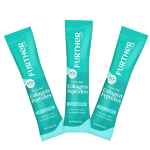Chinese Face Reading is one of the original tools that Traditional Chinese Medicine (TCM) practitioners used thousands of years ago. We all do some type of face reading in our daily lives, from looking at people’s eyes and facial expressions. Truth is, our faces register everything-not just what we are thinking and feeling in that moment, but according to TCM, our faces can register past traumas and stresses.
Today, reading the face is still used in TCM as a means of analyzing a person’s current emotions, as well as to learn information about their past. I use Chinese face reading in my practice, both to learn about my patient’s emotional state, as well as to help in their overall treatment plan. Read on to learn more about face reading in Chinese Medicine and how TCM practitioners map the face.
What is Face reading in Chinese Medicine?
Chinese face reading looks at the Shen (spirit), which is the light from our eyes, as the primary marker of our emotions. Additionally, the lines and wrinkles on our faces also tell a rich and layered story. There are several ways to do Face reading in Chinese medicine. One method is to view every feature on the face – including the ears – as corresponding to a decade of a person’s life after childhood. According to Chinese face reading, below is what each part of our face corresponds to:
Ears: the first seven years of life, including the in-utero experience
Hairline: adolescence
Forehead: our twenties
Eyebrows and Eyes: our thirties
Nose: our forties
Mouth:our fifties
Chin: our sixties
Jaw: our seventies
What I love about face reading in Chinese Medicine is that, in contrast to the very American view of wrinkles as something to fear, hide, erase and be embarrassed about, this ancient Chinese system tells us that lines on the face mean you have lived a full life, rich with emotions and experiences that have left their mark on you. They are quite literally “life-lines.” Indeed, each part of our face corresponds to a different emotion. Below is an emotional map which demonstrates the lines and markings that each of these features convey.

As you can see from the image above, each line connotes something different, whether it’s decades of pain, humor, or a hard-won transformation.
Crow’s Feet: While many people (especially women) complain about having “crow’s feet,” they are actually joy lines showing how much one has smiled and laughed throughout one’s life. However, while smiling may cause wrinkling around the eyes, smiling is good for you! It’s actually been linked to the release of endorphins, which lowers heart rate and blood pressure and also relieves pain!
Purpose Lines: These are the lines that go from the nose to the mouth (as you can see in the map). Purpose lines are a positive thing as they show that you have purpose! These lines typically don’t get pronounced until we reach mid life.
Transformation Lines: Transformation lines are lines on the forehead that radiate up from the brow towards the hairline. These lines show that you have gone through some kind of transformational event–perhaps the loss of a loved one, or a tough journey of self-discovery and self-actualization. Transformation lines are proof that despite the trauma, you’ve come out the other side and have more wisdom, empathy and courage.
There are of course many more lines on the face – too many to list here! I encourage you to research more deeply! Here is a great resource for you to learn more about reading the face.
Using Chinese Face Reading To Help Treat Patients
In my practice, reading the face is extremely helpful for me because every feature of the face not only corresponds to a decade of one’s life and emotions, but each feature also corresponds to another part of the body. In the below image, you can see the organ systems mapped out on the face. Using the organ systems map and the emotional map for facial diagnosis is incredibly useful for treating patients and understanding their underlying emotional or physical imbalances.
Often the face exhibits symptoms and tells me something is imbalanced even before this information would be detectable in any traditional medical test. I can then prescribe a course of acupuncture and/or herbal remedies that can alleviate the qi blockage or imbalance in that particular area.

Image by: @jessica_johnston_tcm_doula
Chinese Face Reading is a great tool to learn more about someone-both their emotions and even to provide information on some physical imbalances. If you are interested in learning more about reading the face, you can schedule a consultation with me at Soho Acupuncture By Jen Becker
Want to Read More?
This Simple Inner Smile Meditation Increases Your Well-Being
What is Chinese Herbal Medicine And How Can It Benefit You?
5 Health Benefits of Astragalus Explained by a Master Herbalist

























